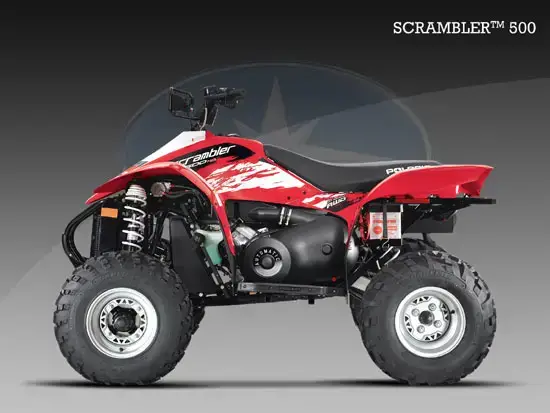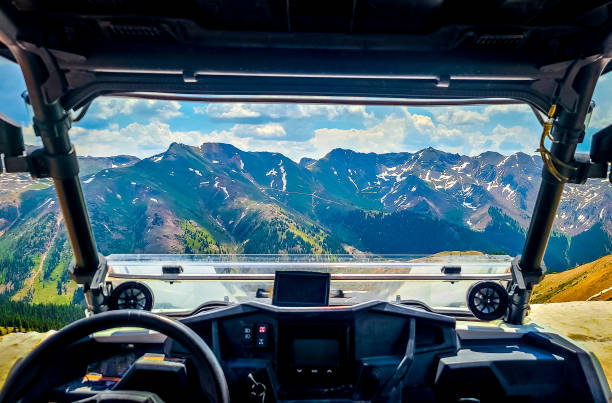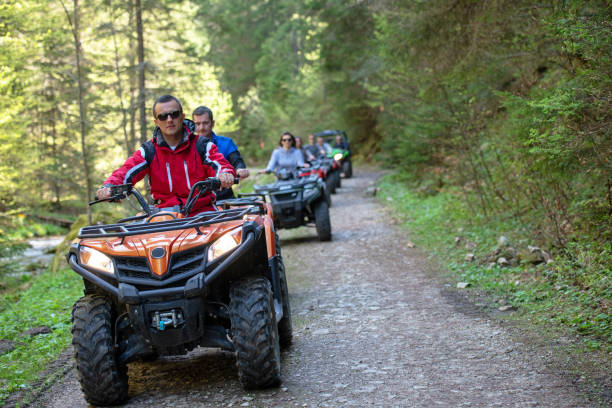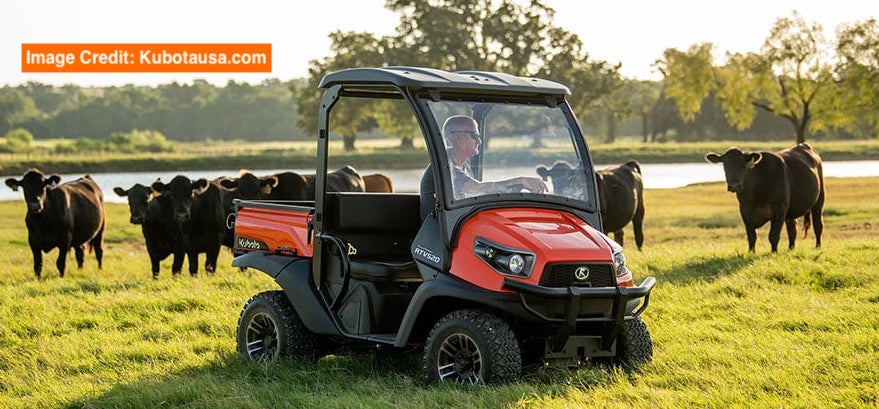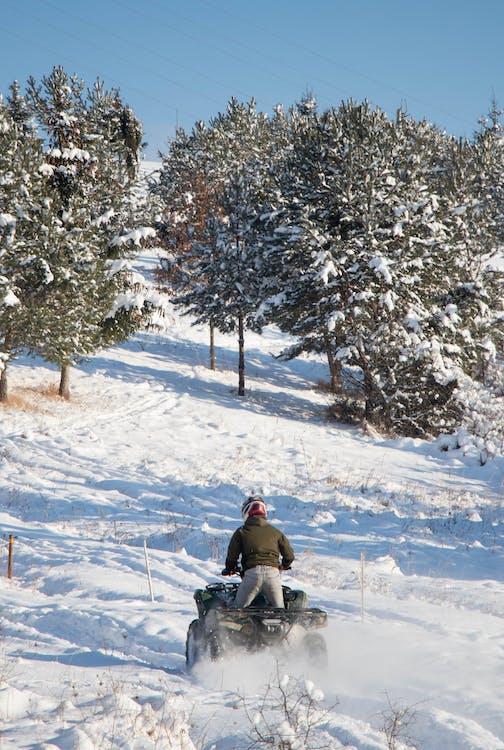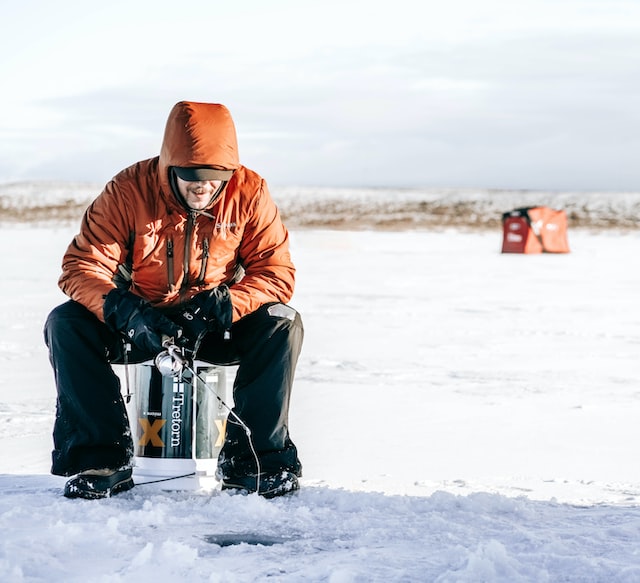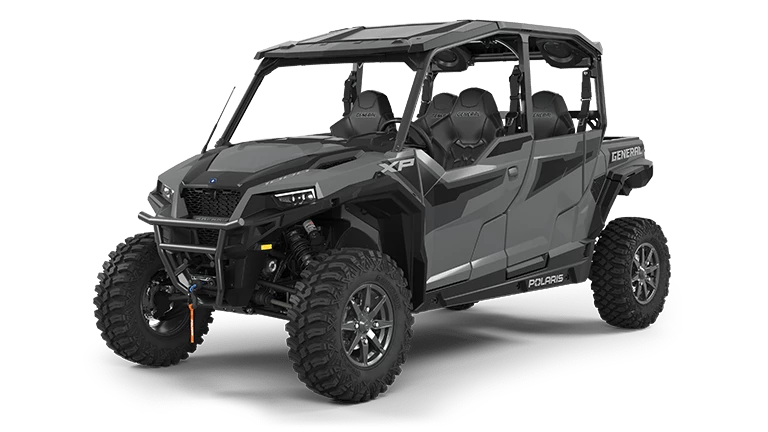As an Amazon Associate I may earn a commission from qualifying purchases at no additional cost to you.
Over the years, the Polaris Scrambler 500 has gained a reputation as a reliable and durable ATV that can handle any task thrown at it. Whether it’s for work or play, the Scrambler has proven to be a popular choice among ATV enthusiasts.
Let’s take a closer look at what made this machine the classic that it is.
History of the Polaris Scrambler 500
Release Date
The Polaris Scrambler 500 was first released in 1997 as a replacement for the Trail Boss 350. The Trail Boss 350 was a popular ATV, but Polaris wanted to create a new model that would offer even better performance and versatility.
The Scrambler was designed to provide a smoother ride, better handling, and more power than the Trail Boss 350. It was also around this time that riders were looking for a machine that was versatile enough to handle both work and play, and the Scrambler was designed to do both, and it did both of them well.
The Scrambler was one of the first ATVs to offer four-wheel drive, giving riders the flexibility to switch between two-wheel and four-wheel drive as needed. It also had a sportier design than many other utility ATVs on the market, making it a popular choice for recreational riders.
Model Changes

Originally equipped with a 400cc two-stroke engine, the Scrambler 500 has seen quite a few changes over the years.
In 2004, Polaris upgraded the Scrambler to a 500cc four-stroke engine, which has become the standard for the model. The 500cc engine provides plenty of power, making it a great choice for riders who want to have some fun or put it to work.
Polaris has also released several different models of the Scrambler 500, each with its own unique features.
Some of the most popular models include the Scrambler 500 4×4, the Scrambler 500 HO, and the Scrambler 500 4×4 LE.
In 2020, Polaris released the Sportsman XP 1000 S and Scrambler XP 1000 S models, which featured upgraded axles and differentials to handle the extra power. The Scrambler also came with either Standard or Performance mode, which could be selected with a dash-mounted switch.
The Polaris Scrambler may have evolved beyond the 500 series, but the spirit of this legendary ATV lives on.
Specifications
Engine and Performance
There have been some minor changes to the powerplant of the scrambler over the years but for the most part, the performance has remained the same.
Over the years the Polaris Scrambler 500 had a liquid-cooled, 4-stroke, single-cylinder engine with a displacement of 498cc. It had a maximum horsepower of 31 and maximum torque of 32 lb-ft. The top speed was around 60 mph.
The latest model of the Polaris Scrambler 500 is powered by a four-valve, liquid-cooled SOHC engine with a bore of 92 millimeters and a stroke of 75 millimeters.
The engine displacement is 499 cubic centimeters, and it delivers a maximum power output of 38 horsepower. The vehicle has a top speed of approximately 60 miles per hour, making it one of the fastest ATVs in its class.
Drivetrain and Transmission
All model years of the Polaris Scrambler 500 had a fully automatic Polaris Variable Transmission (PVT) with high and low range. It had a selectable 4-wheel drive system with a shaft drive.
All model years of the Polaris Scrambler 500 ATV had a chain final drive. The number of gears varied depending on the model year, with some models having reverse gear.
It’s worth noting that the drivetrain and transmission specifications may vary depending on the specific model and trim level.
Additionally, the selectable 4-wheel drive system allowed riders to switch between 2-wheel drive and 4-wheel drive depending on the terrain and riding conditions.
Suspension and Handling
The Polaris Scrambler 500 ATV was produced from 1997 to 2012. During that time there were many updates to the suspension system.
It’s also worth noting that the suspension specifications may vary depending on the specific model and trim level of the Polaris Scrambler 500 ATV.
- • 1997-2001: The Polaris Scrambler 500 had a MacPherson Strut front suspension and a progressive rate swingarm rear suspension. The front suspension had 6.7 inches of travel, while the rear suspension had 9.5 inches of travel.
- • 2002-2003: The Polaris Scrambler 500 had a double A-arm front suspension and a progressive rate swingarm rear suspension. The front suspension had 8.2 inches of travel, while the rear suspension had 10.5 inches of travel.
- • 2004-2006: The Polaris Scrambler 500 had a double A-arm front suspension and a progressive rate swingarm rear suspension. The front suspension had 8.2 inches of travel, while the rear suspension had 10.5 inches of travel.
- • 2007-2009: The Polaris Scrambler 500 had a double A-arm front suspension and a progressive rate swingarm rear suspension. The front suspension had 9.0 inches of travel, while the rear suspension had 10.5 inches of travel.
- • 2010-2012: The Polaris Scrambler 500 had a double A-arm front suspension and a progressive rate swingarm rear suspension. The front suspension had 9.0 inches of travel, while the rear suspension had 10.5 inches of travel.
Braking and Tires
The Polaris Scrambler 500 had hydraulic disc brakes on the front and rear wheels. The front tires were Carlisle AT489 23×7-10, while the rear tires were Carlisle AT489 22×11-10
All model years of the Polaris Scrambler ATV had a single-disc brake system on the front and rear wheels. The tire size remained consistent across all model years, with the front tires being Carlisle AT489 23×7-10 and the rear tires being Carlisle AT489 22×11-10.
It’s worth noting that the brake system and tire specifications may vary depending on the specific model and trim level of the Polaris Scrambler 500 ATV. Additionally, the Carlisle AT489 tires were designed for all-terrain use and provided good traction and durability.
Pricing and Availability
The Polaris Scrambler 500 ATV was produced from 1997 to 2012. The MSRP and average used price for each model year are:
1997-2001: The MSRP for the Polaris Scrambler 500 ranged from $6,099 to $6,299. The average used price today is between $1,000 and $2,000.
2002-2005: The MSRP for the Polaris Scrambler ranged from $6,299 to $6,499. The average used price today is between $2,000 and $3,000.
2006-2008: The MSRP for the Polaris Scrambler ranged from $6,499 to $6,699. The average used price today is between $2,500 and $3,500.
2009-2012: The MSRP for the Scrambler ranged from $6,699 to $6,799. The average used price today is between $3,000 and $4,000.
Comparisons
Polaris Scrambler 500 vs. Polaris Predator
The Polaris Scrambler 500 and the Polaris Predator were both high-performance ATV models produced by Polaris. Here is a comparison of their specifications, features, and performance:
Engine and Performance:
The Polaris Scrambler 500 had a liquid-cooled, 4-stroke, single-cylinder engine with a displacement of 498cc. It had a maximum horsepower of 31-34 and a maximum torque of 32 lb-ft. The top speed was around 60 mph.
The Polaris Predator had a liquid-cooled, 4-stroke, single-cylinder engine with a displacement of 499cc. It had a maximum horsepower of 40-42 and a maximum torque of 33 lb-ft. The top speed was around 70 mph.
Drivetrain and Transmission:
Both the Polaris Scrambler and the Polaris Predator had a fully automatic Polaris Variable Transmission (PVT) with high and low range. They both had a selectable 4-wheel drive system with a shaft drive.
Brake System and Tires:
Both the Polaris Scrambler and the Polaris Predator had hydraulic disc brakes on the front and rear wheels. The front tires were Carlisle AT489 23×7-10, while the rear tires were Carlisle AT489 22×11-10.
Suspension:
The Polaris Scrambler had a double A-arm front suspension and a progressive rate swingarm rear suspension. The front suspension had 9.0 inches of travel, while the rear suspension had 10.5 inches of travel.
The Polaris Predator had a double A-arm front suspension and a progressive rate swingarm rear suspension. The front suspension had 10 inches of travel, while the rear suspension had 11 inches of travel.
It’s worth noting that the Polaris Predator was designed more for sport riding, while the Polaris Scrambler 500 was designed as a crossover between sport and utility riding. Additionally, the specific specifications and features may vary depending on the model year and trim level of each ATV.
Overall, the Polaris Predator had a more powerful engine and higher top speed, making it better suited for racing and sport riding. The Polaris Scrambler 500, on the other hand, had a more balanced design that made it suitable for both sport and utility riding.
Both ATVs had similar drivetrain and brake system specifications, with the Polaris Predator having slightly better suspension travel.
Polaris Scrambler 500 vs. Can-Am Renegade
The Polaris Scrambler 500 and the Can-Am Renegade are both high-performance ATV models designed for sport and utility riding. Here is a comparison of their specifications, features, and performance:
Engine and Performance:
The Polaris Scrambler 500 had a liquid-cooled, 4-stroke, single-cylinder engine with a displacement of 498cc. It had a maximum horsepower of 31-34 and a maximum torque of 32 lb-ft. The top speed was around 60 mph.
The Can-Am Renegade is available with several engine options, including a 570cc, 850cc, and 1000cc engine. The 570cc engine has a maximum horsepower of 48 and maximum torque of 39 lb-ft and is the machine that most compare with the Scrambler.
That said the 850cc engine has a maximum horsepower of 78 and maximum torque of 56 lb-ft. The top speed varies depending on the engine size and model.
Drivetrain and Transmission:
Both the Polaris Scrambler and the Can-Am Renegade had a fully automatic transmission. The Polaris Scrambler 500 had a Polaris Variable Transmission (PVT) with high and low range, while the Can-Am Renegade had a Continuously Variable Transmission (CVT) with high, low, and reverse gears. They both had a selectable 4-wheel drive system with a shaft drive.
Brake System and Tires:
Both the Polaris Scrambler 500 and the Can-Am Renegade had hydraulic disc brakes on the front and rear wheels. The tire sizes varied depending on the specific model and trim level.
Suspension:
The Polaris Scrambler had a double A-arm front suspension and a progressive rate swingarm rear suspension. The front suspension had 9.0 inches of travel, while the rear suspension had 10.5 inches of travel.
The Can-Am Renegade had a double A-arm front suspension and a TTI-independent rear suspension. The front suspension had 9.2-9.
Polaris Scrambler 500 vs. Polaris Sportsman
The Polaris Scrambler 500 and the Polaris Sportsman are both high-performance ATV models designed for sport and utility riding.
Engine and Performance:
The Polaris Scrambler had a liquid-cooled, 4-stroke, single-cylinder engine with a displacement of 498cc. It had a maximum horsepower of 31-34 and a maximum torque of 32 lb-ft. The top speed was around 60 mph.
The Polaris Sportsman is available with several engine options, including a 450cc, 570cc, 850cc, and 1000cc engine. The 450 and 570 offer the most similar comparison.
The 450cc engine has a maximum horsepower of 33 and maximum torque of 24 lb-ft, while the 570cc engine has a maximum horsepower of 44 and maximum torque of 35 lb-ft.
The top speed varies depending on the engine size and model but both models topped out at around 50-60 mph.
Drivetrain and Transmission:
Both the Polaris Scrambler 500 and the Polaris Sportsman had a fully automatic transmission.
The Polaris Scrambler had a Polaris Variable Transmission (PVT) with high and low range, while the Polaris Sportsman had a Polaris Variable Transmission (PVT) with high, low, neutral, and reverse gears. They both had a selectable 4-wheel drive system with a shaft drive.
Brake System and Tires:
Both the Polaris Scrambler and the Polaris Sportsman had hydraulic disc brakes on the front and rear wheels. The tire sizes varied depending on the specific model and trim level.
Suspension:
The Polaris Scrambler had a double A-arm front suspension and a progressive rate swingarm rear suspension. The front suspension had 9.0 inches of travel, while the rear suspension had 10.5 inches of travel.
The Polaris Sportsman had a double A-arm front suspension and a dual A-arm rear suspension. The front suspension had 8.2-9.0 inches of travel, while the rear suspension had 9.5-10.25 inches of travel.
Additional Features:
The Polaris Scrambler had a sportier design with a more aggressive stance, while the Polaris Sportsman had a more utilitarian design with a comfortable seat and storage options.
The Polaris Scrambler had a narrower stance and shorter wheelbase, making it more maneuverable in tight spaces. The Polaris Sportsman had a wider stance and longer wheelbase, making it more stable and comfortable for longer rides.
The Polaris Scrambler had a lower ground clearance of 4.5-5.5 inches, while the Polaris Sportsman had a higher ground clearance of 10.25-13 inches, making it better suited for rough terrain and obstacles.
Overall, the Polaris Scrambler was designed more for sport riding, while the Polaris Sportsman was designed more for utility riding.
The Polaris Sportsman had a wider range of engine options and higher ground clearance, making it better suited for off-road adventures and work tasks.
The Polaris Scrambler had a more aggressive design and sportier performance, making it better suited for racing and sport riding. The choice between the two ATVs would depend on the rider’s intended use and personal preferences.

